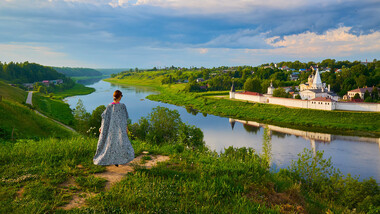White-stone Russia came from Staritsa, the locals say. Not once will you want to return to this ancient town, which can be explored on foot in just a couple of hours. Staritsa is shrouded in legends.
According to one of them, the town near the mouth of the Staritsa (or Starchonka, how it was originally called) River was completely destroyed by the Tatar Mongols at the end of the 13th century, with only one old woman remaining alive. She took refuge in one of the white stone caves, for which the town is so famous. And as ‘old woman’ is translated as 'staritsa' in old Russian, allegedly this is why the town is called this way (and not because of the nearby Starchonka River).

That’s why it is worth visiting. 1. Find out how the old white-stone Russia was born These days, the quarried local white stone goes to Moscow for the restoration of the Kremlin and the Tsaritsyno Palace, as well for the Assumption Cathedral in the city of Yaroslavl.
But, before this, people always lined up for Staritsa white stone and took it across the whole of Russia — to the cities of Moscow, Tver, Smolensk, St. Petersburg, Arkhangelsk and others. It was especially convenient to float the stone down the Volga River (as Staritsa River is Volga’s tributary), before it became shallow in these places.
Staritsa Bridge Since its foundation in 1297, the town was famous for its amazingly white limestone, which was nicknamed ‘Staritsa marble’. Whole local families were involved with the limestone e.
















